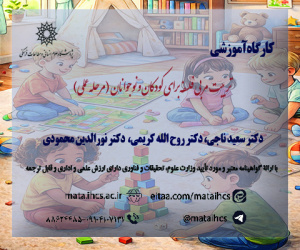گونه شناسی براهین توحیدی در قرآن (مقاله علمی وزارت علوم)
درجه علمی: نشریه علمی (وزارت علوم)
آرشیو
چکیده
قرآن کریم برای اثبات وجود خدا و یکتایی او، براهین فراوانی یادآورشده است این فراوانی و کثرت براهین همیشه مورد توجه متکلمان و پژوهشگران علوم قرآنی بوده و از دیر باز برای غلبه بر این کثرت و سهولت مواجهه با آن تلاش کرده اند تا براهین را براساس تشابهات و تفاوت های آن طبقه بندی کنند. طبقه بندی براهین توحید در قرآن به: الف) براهین آفاقی ب) براهین انفسی ج) و براهین شهودی که مستفاد از آیه 53 سوره فصلت است از این قبیل می باشد. تحقیق پیش رو با روشی توصیفی - تحلیلی درصدد پاسخ گویی به این سوالات است که : 1) بر اساس ویژگی های ساختاری و مضمونی، چگونه می توان حجم زیاد این براهین در قرآن را طبقه بندی کرد؟ 2) نمایندگان واقعی و زیرگروهای هر یک از این طبقات کدامند؟ 3) آثار این طبقه بندی و نمایندگان واقعی آن چیست؟ با فحصی که در این مقاله انجام شد، مجموع براهین توحید در قرآن به سه طبقه دسته بندی شد، آنگاه دوازده نماینده واقعی از آنها با روشی منطقی و کاملاً قرآنی گونه شناسی شد تا شناخت تشابهات و تفاوت های براهین و تبیین آنها آسان تر شود. بر اساس یافته های این پژوهش، تعدد براهین مرهون تعدد حدود وسطاست و قرآن از حد وسط های گوناکونی بهره گرفته است.گاهی با حد وسط «خلقکم» و گاه با «یتوفاکم» و... گاهی با قیاس اقترانی وگاه با قیاس استثنایی و... استدلال نموده است. آثار این تنوع، یکی اتمام حجت بر همگان است و دیگری؛ دادن فرصت به توده مردم و سطوح میانی جامعه، تا بتوانند به آسانی معارف عمیق قرآنی را دریابند و زمینه مفاهمه و گفتگو را فراهم سازد.typology of Monotheistic Arguments in the Qur'an
The Holy Quran mentions many proofs to prove the existence of God and his uniqueness. This abundance and multiplicity of proofs have always been of interest to theologians and researchers of Quranic sciences, and for a long time, they have tried to classify the proofs based on their similarities and differences in order to overcome the multiplicity and ease of dealing with it. The classification of proofs of monotheism in the Qur'an into a) material proofs b) spiritual proofs c) and intuitive proofs used in verse 53 of Surah Fussilat. The present research is trying to answer these questions with a descriptive-analytical method: 1) Based on structural and thematic features, how can the large volume of these proofs in the Qur'an be classified? 2) Who are the real representatives and subgroups of each of these categories? 3) What are the effects of this classification and its real representatives? With the analysis done in this article, the total proofs of monotheism in the Qur'an were classified into three categories, then, twelve real representatives of them were categorized in a logical and completely Quranic way to make it easier to recognize the similarities and differences of the proofs and explain them. According to the findings of this research, the multiplicity of proofs is due to the multiplicity of middle limits, and the Qur'an has employed the middle limits and argued sometimes with the middle limit of «خلقکم» "Khalqakom" and sometimes with «یتوفاکم» "Yutofakom" and... sometimes with conjunction analogy and sometimes with exceptional analogy and... One of the effects of this diversity is to complete the proof for everyone, and the other is to give the mass of people and the middle levels of society the opportunity to easily understand the deep teachings of the Qur'an and provide the basis for understanding and dialogue.









